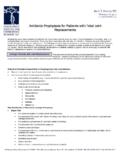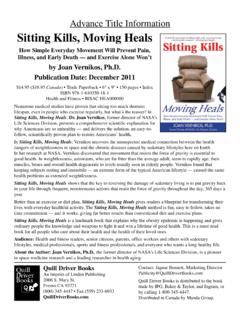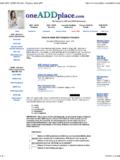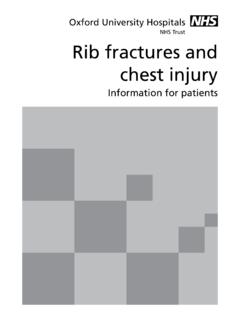Transcription of Activity after shoulder replacement surgery - Dr. Mazzara
1 shoulder replacement surgery In What Activities May I Participate after I Recover? after undergoing shoulder replacement surgery , it is important to have realistic expectations about the types of activities you may do. Minimal stretching of your new shoulder is recommended throughout your lifetime to maintain your full range of motion. Driving You may give you permission to drive within four weeks after the surgery . If your surgery was on the right side, driving permission may not be given until a month or six weeks following the surgery . Work Activities Determining the date you return to work will depend both on your surgeon and the type of work you do. Some individuals may require modifications of their job, while others may easily return to their previous activities. Lifting and pulling job-related activities might be delayed or discouraged. Those engaged in heavy manual labor may have to discuss the possibility of vocational counseling with their surgeon.
2 Leisure and Sport Activities There are different risks associated with certain types of leisure and sport activities. Some activities may lead to damage of your artificial joint over time due to wear and tear of the joint. More vigorous the activities will increase the risk of damaging the implant. Increased the wear and tear on the implant will increase the risk of loosening of the implant. Three major categories of activities should be avoided. These include: Activities causing high impact stresses on the implant Activities with potentially high risk of injury Activities that may result in falling or getting tangled with opponents risking dislocation of the joint itself or a fracture of the bone around the implant. These types of activities include sport activities requiring a vigorous throwing motion of the arm, chopping wood, hammering, heavy lifting or pushing activities, martial arts, and rough contact sports (such as, football, soccer, lacrosse, basketball, baseball, handball, and volleyball).
3 These activities should be avoided. Weight lifting activities may be limited throughout your life. During your post-operative period you may be able to build up to lifting weights weighing less than five pounds. Check with your surgeon and physical therapist about lifting any heavier weights. Lower stress activities such as hiking, walking, biking, golfing, and swimming are excellent forms of exercise for individuals with a shoulder replacement . Some patients also return to playing tennis with a shoulder replacement . As with any medical treatment, individual results may vary. Only an orthopaedic surgeon can determine whether an orthopaedic implant is an appropriate course of treatment. There are potential risks, and recovery takes time. The performance of the new joint depends on weight, Activity level, age and other factors. These need to be discussed with your doctor. shoulder replacement surgery Rehabilitation Timeline after shoulder replacement surgery Now that your shoulder replacement surgery is complete, you may have many questions.
4 What can you expect during your recovery period? How long will your recovery take? Will you be in any pain? When will you be able to use your arm? When will you be able to go back to work? Find some answers below. after surgery and in the Hospital When surgery is completed, your surgeon will update your family and friends on your condition and progress. You will remain in the recovery room for at least an hour or until the anesthesia has worn off and your blood pressure and pulse are stable. If you have pain, the nurses will give you medication. Once out of surgery , your surgeon will decide whether your arm will be in a shoulder splint or shoulder immobilizer, in order to protect and position your shoulder . However, this immobility won't keep you from starting the physical therapy regimen. Exercises begin on the day after surgery with emphasis on the shoulder , wrist, and hand. You will also be encouraged to use your arm for some simple activities like feeding yourself, brushing your teeth, and shaving.
5 With surgeon approval, strengthening exercises will begin at about four weeks. This delay is necessary to allow the tissues to heal. When You Are Discharged from the Hospital You can expect to be released from the hospital one to two days after surgery . Before you are released, your surgeon and physical therapist will talk with you about the importance of limiting any sudden or stressful movements to the arm for several weeks or longer. Activities that involve pushing, pulling, and lifting will not be possible until you are given permission from your surgeon. Your First Day at Home You may need help with your daily activities, so it is a good idea to have family and friends prepared to help you. With their help, you will need to do the exercises you learned while in the hospital, four to six times daily. These exercises gradually increase the movement in your joint, so it is important to do them as scheduled. Don't forget to wear the sling every night for at least the first month after surgery , and never use your arm to push yourself up in bed or from a chair.
6 The added weight on your shoulder may cause you to re-injure the joint. How to Cope in the First Week You are encouraged to return to your normal eating and sleeping patterns as soon as possible. It is important for you to be active in order to control your weight and muscle tone. But remember to increase your Activity level or exercises only as your surgeon has directed. You might be able to return to work within several days. Consult with your doctor, as this differs from patient to patient. However, if your job requires heavy lifting or climbing, there may be a delay for several months. Until you see your surgeon for your first follow-up visit, make certain that your wound stays dry and is not draining. If you notice any drainage or a foul odor from your incision, please contact your surgeon. Also, if your temperature goes above degrees, call your surgeon. What You Can Expect in the First Month Your stitches will be removed seven to 10 days after surgery , but remember it is quite common to still experience pain surrounding the surgical site.
7 You will begin a formal physical therapy program 10 to 14 days after surgery . Four to six weeks after surgery , you will start a progressive strengthening program. Physical therapy is a deliberate process of not only strengthening your shoulder but also altering how you use your arm. It may be many months before your desired results are achieved, so do not get discouraged. Your shoulder will generally continue to improve steadily up to five to six months after surgery . after that point further improvement is very slow; although it has been shown that even after a year or more, Activity can increase as muscle strength continues to improve. When can you get behind the wheel of your car? Driving should wait until you can perform the necessary functions comfortably and confidently. This may take up to one month or longer if the surgery has been performed on the right shoulder because of the increased demands for shifting gears. But only your surgeon can give you the proper advice in this area.
8 Six Weeks after surgery and Beyond Keep in mind that you will need to be seen by your surgeon six weeks, five months, and 12 months after your surgery . You may also see your surgeon once a year after the first year, even if you are not having any problems. Because each person heals differently, there are different recovery timelines. But in general, an average recovery period typically lasts three to six months. You should not play contact sports or do heavy lifting for at least six months. You don't want to find yourself back in surgery . Postoperative Total shoulder Physical Therapy Postoperative In-Patient Total shoulder replacement Examination and Interventions/Treatment shoulder replacement surgery can be performed using a variety of techniques. Therefore, postoperative instructions will depend on your surgeon and the type of technique performed. Examination During the first visit with the physical therapist following your surgery , he or she will perform a thorough examination to gather as much information as possible about the history of your condition.
9 Quick screening examinations of your heart rate, blood pressure, breathing rate, skin integrity, range of motion of other joints of the body, functional strength of other areas of the body, and your overall ability to move may be done during this phase. Your physical therapist may assess the following: How your operated arm is moving The presence of pain The allowable range of motion in your new shoulder How you are able to move around Your safety when getting up How well you remember and are practicing your shoulder precautions and your breathing Interventions/Treatment Plan Initially ice may be used to help reduce pain and swelling. Ice makes the blood vessels become more narrow (vasoconstriction), which helps control inflammation. It may be used throughout the day for up to eight to ten days postoperatively. Precautions Your therapist will discuss the shoulder precautions to follow after surgery . Keep sling or immobilizer splint on until instructed otherwise Minimize or prevent swelling o Elevate the arm o Perform exercises to the other joints of the arm Do not do any stressful or sudden movements of the arm Do not lift, push, or pull until instructed otherwise (for example, do not push yourself up in bed or push up from a chair with your replacement shoulder arm).
10 Exercises In some instances, exercises for your shoulder will begin in the recovery room with gentle passive movements of the shoulder . Exercises should be done only at the direction of your physical therapist. The choice of exercises used after surgery will depend upon the type of surgical technique used, the type of replacement joint, how unstable the shoulder was before surgery , and whether any muscle structures were repaired during the surgical process. Exercises are used to help control pain and help with movement in the shoulder and surrounding joints. Your arm may also be placed in a machine that allows continuous passive movements of your shoulder . Some of the following exercises may be incorporated in your treatment plan: Gentle forward movement and outward rotation of your new shoulder will be done initially with the help of your therapist. You will be instructed in the performance of these movements with the help of a stick so that your other arm assists the performance of these movements of your new shoulder .










